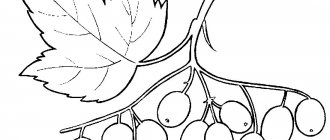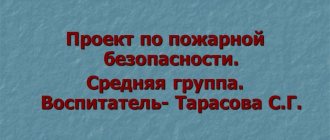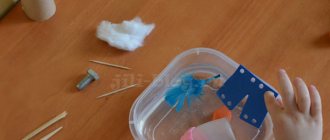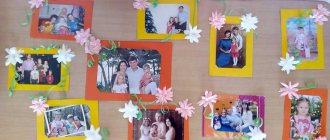I am a happy grandfather, my grandchildren are very active creatures and are interested in everything in the world. Including paper production. They are already trying to make it in the kitchen. These few posts are for them and their peers. Since my grandchildren are of different ages, the youngest is a kindergarten graduate, the eldest is almost a university graduate, telling them about paper production is not an easy task.
However, I will try to explain the importance of paper production in meeting the immediate needs of people and in order to demonstrate how industrial production, with reasonable management, can not conflict with nature. Perhaps the posts will also be of interest to adults who are not familiar with paper production and the importance of its production for the sustainable development of our civilization. I will try to talk about this as briefly and clearly as possible.
What is paper made from?
WOOD
Nowadays, in most cases, paper is made from wood. Wood is removed from the forest. So paper production and forests are connected to each other. We will definitely talk about this close connection with you, because it is important in order to understand that reasonable paper production does not destroy the forest, but lives with it in good neighborhood with mutual benefit.
It should be noted that wood cannot be completely processed into paper.
The picture shows the parts that make up trees. So, most often, the barrel comes into paper production. The bulk of paper is produced from such wood. This is paper for books and magazines, packaging, towels, etc. But paper production also occurs using leaves and bark.
WOOD PROCESSING WASTE
Let us immediately note that paper can be produced both from trees and from wood waste generated during the production of boards, timber, slats, sleepers and other building materials; they are also called lumber.
Wood waste can come in different sizes. Here in the picture they are in the form of scraps of boards, bars, slats.
The waste in this picture is much smaller, it is closer to sawdust, but sawdust is quite suitable for paper production.
WASTE PAPER
But this is not all the materials from which paper is made. In some countries, up to half of all paper and cardboard today is made from paper and cardboard that have served mankind. This paper and cardboard is called waste paper.
Waste paper is used packaging, packaging of goods, dairy and other liquid products; These are old newspapers, magazines, paper from offices, where they print on it and throw away a lot of drafts before they print it as needed.
Waste paper is also generated in your schools and kindergartens. Sometimes books also end up in waste paper. These are books in which the information is outdated and of no interest to anyone, or books that are completely worn out. Although books in waste paper are somehow not right and a book in waste paper always attracts attention and often evokes pity. Nevertheless, people say about some books: “This is waste paper” and they are right... In developed countries, up to 90% of the generated waste paper is recycled again into paper and cardboard.
Nowadays, most enterprises add waste paper to cellulose and wood pulp.
Packing and cutting
The method of cutting paper rolls differs depending on the plans for its use. The rolls are cut in a slitter and then wound into several rolls of smaller volume and diameter. Then they are divided into ready-made sheets for the printing shop - for example, by laser (the edges are neat, there is no carbon deposits on them).
Finished paper rolls
The last stage of paper making is packaging. Its most common types:
- packaging in packs of 250-1,000 sheets, wrapped in kraft paper or other dense and waterproof material;
- palletizing - transferring sheets onto flat rectangular stands with recesses for gripping and fastening;
- mixed method - first the sheets are collected in bundles and then placed on pallets;
- "roll" packaging (rolls up to 10-15 kg) - suitable for technical, large-format packaging paper (can be carried manually, without ramps or special equipment).
Paper from clothes
Not so long ago, some 150 years ago, paper was made exclusively from old rags (which our clothes turn into after wear), from old fishing nets, from old sails and ropes removed from sailing ships. The production of paper from rags began in the city of Samarkand in the 8th century. For 10 centuries, paper was made from rags!
Rag collectors walked and drove along the streets of medieval cities and villages with carts and boxes. Just like knife sharpeners, gypsies and beggars, they were a common sight on the streets of that time.
The picture shows a rag collector in the German city of Nuremberg.
With the increase in demand for paper and the emergence of more and more manufacturers, rags became scarce. It has become scarce. Governments passed special laws requiring residents to hand over certain amounts of rags for paper production. Moreover, certain residential areas and settlements were attached to paper mills (as paper production enterprises were called). In some cities, each paper mill had its own rag pickers. They were given a special certificate. The number of assemblers for each mill was strictly limited.
In the picture on the right there are female workers sorting rags. They have sharp knives in their hands, with which they cut off unusable sections of rags.
At the very end of the era of rag paper in the 19th century, rags, after sorting and primary (there were subsequent) cleaning, began to be boiled in such rotating boilers with hot steam supplied to them and with the addition of soda. This made it possible to better dissolve the fabric into fibers.
The production of paper from rags is, in fact, the first in the history of mankind, the production of a new material from waste. The first case of recovery or, as they now say, waste Textile waste was transformed into an expensive and in-demand new material - paper.
Paper mill or manufactory. Here you can see all the operations of paper production from scooping from the paper pulp onto a sieve with the transition to pressing and drying.
Paper was produced from rags boiled and crushed in paper mills. It was hard manual labor consisting of constantly repeating operations. The master scooper manually poured each sheet onto a sieve, then the wet sheet was covered with cloth - this was done by the fuller and, on a felting hill, he squeezed water out of the sheet by rolling with increasing pressure. The wet sheet passed from the mesh to the cloth, and was covered with a second cloth. A stack of such pies was made from cloth and sheets of paper, and this stack, it was called “masonry,” was pressed on a screw or hydraulic press. After pressing, the “sweeper” worker separated the layers of paper from the cloth and placed them in a pile. Wet sheets were hung out to dry on “hangers.”
Depending on the source of the rag, the paper was of a certain quality. By the brands of paper one can judge the clothing of people of the late Middle Ages.
Here are the types of fabrics collected in Germany and what grades of paper were produced from them.
- Peasant linen shirts - special paper of medium quality;
- Rough linen shirts - paper for bags;
- Thin flaps of linen (rags) - men's paper;
- Nettle fabric, Dutch canvas - notepaper;
- Blue linen robes - blue paper;
- The average domestic canvas is printed paper;
- Ship waste (sails, ropes) - brown paper;
- Bad rags are wrapping paper.
Production stages
The technology consists of the following stages:
- mass processing - grinding, dyeing, mixing plant and chemical components;
- diluting the mass with water, cleaning, pressing and drying;
- calendering;
- cutting, sorting and packaging.
The paper making process begins with grinding raw materials in continuously operating machines. Factories use rolls, conical and disk mills, and refiners.
The resulting flour is cleaned, a binder and filler are added:
- paraffin emulsions;
- alumina, kaolin;
- urea-, melamine-formaldehyde resin;
- rosin and animal glues;
- talc, starch, etc.
The liquid composition is poured onto the flat mesh of the paper machine. After compaction and molding, the solid web is coated with adhesive pigments (this is how coated paper is made) or other compounds.
The next step is drying at elevated temperatures using grinding cylinders. The fibers harden to form a paper web. After dehydration, it goes into calenders. These are massive cylinders, united in 5-8 pieces. Passing between them, the paper becomes smooth, leveled, and compacted.
This is how paper dries
The finished tape is wound onto a reel - a rotating cylinder with a pressure roller. He collects the canvas into a roll. Paper production technology also involves post-processing - glossing, dyeing, cutting.
Cardboard is produced using the same principle - a material with a density of 250 g/m². Book covers, folders, packaging and other similar products are made from it.
Presentation for the lesson on the topic: Presentation “From wood to paper”
Slide 1
State budgetary preschool educational institution kindergarten No. 61 of a combined type, Kolpinsky district, St. Petersburg “FROM WOOD FROM PAPER” Mekhnina Olga Nikolaevna Teacher of the highest qualification category
Slide 2
Goal: To introduce and interest educators in the production and use of paper pulp. Reveal to educators the significance of this work in the cognitive and artistic activities of children. Help develop creative abilities in teachers.
Slide 3
Journey into the world of beauty In the silence of the forest, listen to the sound of the pond and the breeze. It is gentle and very quiet, like the wings of a moth.
Slide 4
Landing "Plant and grow a tree!" A tree is planted soon, but not soon its fruits are eaten.
Slide 5
Plants under our protection
Slide 6
Integration of this topic in educational areas: Cognition Health Artistic creativity Physical education Safety Reading fiction. Socialization of literature Labor Communication Music
Slide 7
Cognitive - speech development Cognition Teacher's story with discussion Why trees need leaves. Can frost kill a tree? Inside a tree. Where do trees live? Conversation Journey into the past of the book. From seed to tree. Creating a collage “From tree to paper” Experiments: The root is the stability of the tree. How tree roots absorb water. The wind disperses trees to new places. Search activity “Find a leaf that fell a long time ago...yesterday...today.” “Count the birch trees around the kindergarten.” “How many coniferous trees grow on the territory of the kindergarten.” Experimenting Paper from napkins; Waste paper; Paper pulp. Fun mathematics Educational games, problem situations based on FEMP. Creation of the album “In the World of Paper” Communication Conversations “The country in which we live. Nature of Russia." "Needs of plants." "Nature and the man-made world." "Books as a gift." A story about the history of the creation of the book. "About caring for nature." Compiling a descriptive story based on I. Shishkin’s painting “Morning in a Pine Forest.” Compilation of stories "If I were a tree." Guessing riddles about trees Writing poems about trees; Literary quiz “Trees in Fairy Tales” Reading fiction “Reading is the window through which children see and learn about the world and themselves.” V.A. Sukhomlinsky Reading V. Zotov “Forest Mosaic” I. Tokmakov “Conversations”. I. Sokolov-Mikitov “Russian Forest” M. Prishvin “Conversation of Trees.” V. Bianchi “Forest Tales”. E. Sinitsina “Clever Tales”, “Apple”, “Pine Cone”. P. Mikhalkov “Christmas tree” Retelling of V. Bianki “Teremok”. Learning by heart “Song of Oak Seedlings.” “Wind and Leaves.” “Birch.”
Slide 8
Social and personal development Safety Reading, conversation, looking at illustrations “When you are in danger”, “How and with what we breathe”. "Rules of conduct in the forest." Socialization S/r game “I am visiting the library”; S/r game “Forester”. D/i “Library”, “Man + nature = amazing things”. “What is paper for?” “Who is the odd one out”, “Loto”. Educational games “Chain”, “You are a part, I am the whole”, “What was, what will be”. Construction and construction game "Building an ecological city." Outdoor games “One, two, three, run to the tree”, “Branch, branch, where is your baby.” “Guess the tree”, “Hurry up to escape.” Work, observation, duty, work assignments Observation of trees; Caring for indoor plants; D/i “Who needs what for work.” Making Attributes for s/r games; Landscape production; Making a “volcano”; Making paper for postcards; Making animal figures from paper dough. Handmade from natural material “Sunflowers”; "A flower for mom."
Slide 9
Artistic and aesthetic development Artistic creativity Examination of reproductions I. Levitan “Golden Autumn”, A. Savrasov “The Rooks Have Arrived”, I. Shishkin “Morning in a Pine Forest”, “Birch and Rowan Trees”. A. Kuindzhi "Birch Grove". Drawing using techniques: leaf printing, spraying, signet imprinting - “Golden Autumn”, “Rowan Branch”. Application “Branch with autumn leaves”; "Maple" using paper pulp; Modeling “Fruits”, “Forest in autumn dress”. Paper design “Heart”, “Flower for Mom”; “Books - babies”; Postcards using paper pulp." Music Listening Tchaikovsky “The Seasons”. F. Liszt “The Sound of the Forest”. We fantasize and improvise “Paper Carnival” (introducing children to rustling sounds, object and musical instruments that produce them). We voice the poems “Talking of Leaves” by V. Berestov (to attract children’s attention to the beauty and richness of the sounds of the surrounding nature). Round dance “There was a birch tree in the field...”. “Wooden stories” (introduction to wooden tools).
Slide 10
Physical development Physical education Morning exercises, movement exercises, physical education classes of a thematic nature “If I were a tree” (according to the exercise of Maura O Conner) Health Got up in the morning, washed, put myself in order - And immediately put my planet in order. Antoine de Saint-Exupéry The Little Prince Conversation: “Help nature!” Working with parents Great importance is given to working with parents. Joint events raise the authority of the family, unite children, parents and us teachers. Once a quarter, the group publishes an environmental newspaper for parents, “Toward Nature with Kindness.” Our parents participated in collecting waste paper. Together with the children we made crafts from natural materials. With the help of their parents, children replenish the collection of words “Find a beautiful word about a tree.” Folders about trees are published every month.
Slide 11
Don't stop being surprised!
nsportal.ru
Modern production
Modern paper production
Previously, paper was made from cotton, silk and linen rags. Today the main material is wood . The leaders are conifers, birch, poplar, chestnut, and eucalyptus. Canada, Russia, the USA, Scandinavia, Japan, and Germany are famous for their large enterprises. The plants are fully automated.
The logs are delivered to workshops where units clean them of bark. The resulting material is ground into fine fibers (fibrils). Mix with water to swell, and remove the remaining wood chips again. Then the homogeneous mass is placed in special cauldrons, where it is boiled in a mixture of strong acids. In the same way, bark and wood chips are processed separately, converting them into cellulose.
Then it is mixed with log fibers, waste paper (the ink is previously removed) and continues to be processed in an acid brew. To give the future paper opacity, kaolin is added. Glue impurities contribute to the smoothness of the surface and water-repellent properties. Various oxides are used in the production of special grades of expensive paper webs.
Paper production today
Now comes the turn of the most important mechanical giant of the plant - the paper-making machine. The giant reaches a length of 100 m and a width of 18-20 m. A metal mesh is constantly scrolled between its two shafts. Raw materials that have gone through several stages of processing are laid out on its surface. Unnecessary moisture flows through the cells, and the mass is evenly distributed over the surface.
Next, the material goes under huge press shafts to form the web. Afterwards, drum irons iron the giant sheet, removing any remaining water. Finally, huge calenders press the paper surface, giving it a finished look. Now you can send rolls for cutting and packaging into sheets of different sizes.
Interesting: How are corn sticks made? Description, photo and video
Human needs for paper do not dry out, and its production is considered harmful. Damage is caused to forests that are subject to massive deforestation. Plants use acids. Waste and harmful substances enter nearby water bodies and into the air. 30,000 school notebooks can be made from 1 ton of paper. But to get it, you will have to cut down 17 trees. It is important to replenish natural resources . Then you won’t have to take children to museums centuries later to explain what paper is and how important it once was.






